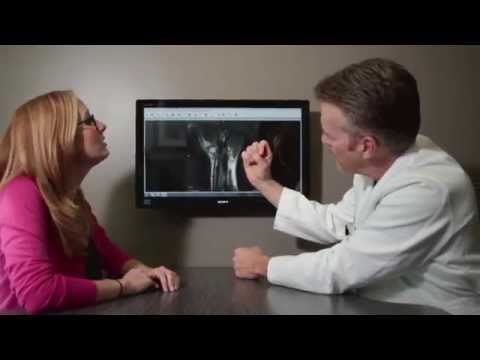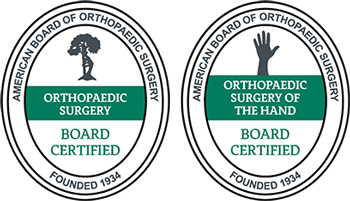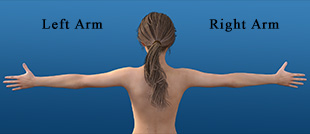How long will it take to recover from a broken knuckle or finger?
Traumatic injury to your knuckle or finger will cause pain, swelling, and loss of function. However, it may not be immediately apparent that your finger is broken. A broken knuckle or finger may seem like a minor injury, but without prompt attention and appropriate treatment, you risk the long-term loss of function in the affected digit. In this article, we explain how long it’ll take to recover from a broken knuckle or finger and the types of treatments that protect the function of your hand.
Contents
How Long Does a Broken Knuckle Take To Heal?

A broken knuckle typically takes between four and six weeks to heal. Healing may be prolonged if the fracture is complex, surgery has taken place, or you have other health problems. Following the healing of the bone, it may take time for the full range of movement of the affected finger to return.
Do You Have a Broken Knuckle?
If you’ve suffered a blow to your hand through such impacts as punching a wall, participating in contact sports, or falling, you may have broken your knuckle. A broken knuckle, also known as a metacarpal fracture, is one of the most common fractures of the hand, with between 18% and 44% of all hand fractures affecting the knuckle. The vast majority of these fractures affect the fingers rather than the thumb and will be simple fractures that don’t penetrate the skin.
Key Symptoms and Signs of a Broken Knuckle
Because knuckle fractures are usually uncomplicated, they may be overlooked as a bruise or sprain. However, diagnosing a broken knuckle ensures that a fracture is managed promptly and you achieve the best long-term outcome. Here are the symptoms and signs of a broken knuckle:
- Redness: The affected finger will be visibly red. In darker skin tones, there may be reduced visibility of injury, so patient history and imaging will be extremely important in confirming a fracture.
- Pain: The pain of a broken knuckle usually can’t be ignored. The pain is sharpest at the injury site and worsens with attempts to move the finger.
- Heat: The inflammation associated with the fracture causes the knuckle to feel warm.
- Swelling: Leakage of fluid out of the small blood vessels around the fracture site causes the knuckle to swell and become extremely tender.
- Loss of function: The pain and swelling mean that it’s impossible to move the affected finger without intense pain.
- Loss of knuckle contour and shortening: The surface of the knuckle may be depressed. Depending on the degree of trauma, the finger may be shortened or misaligned.
- Broken skin: The presence of cut or pierced skin around the injury may indicate that the knuckle fracture is a compound or open fracture. This is where bone fragments have broken the skin, raising the risk of infection.
- Cracking sounds: Attempts to move the digit may cause a cracking or popping sound.
Diagnosing a Broken Knuckle
Though most knuckle fractures are well-defined isolated injuries that are often treated similarly to a bruise or sprain, it’s essential to assess the injury properly to ensure that the treatment protocol will be appropriate. Knuckle injuries don’t always heal on their own and may require surgical intervention, so thorough investigation, including imaging should be routine. Diagnosis of a knuckle fracture includes:
A Full History of the Injury
Your doctor needs to know how the injury occurred. If an impact has taken place, they may ask what impacted the hand and if there are other injuries you may have sustained at the same time, such as cuts from broken glass or abrasions. It’s also important for your doctor to know if you’re right handed or left handed and your occupation.
Examination of the Injured Knuckle
Visual inspection of the knuckle may show a loss of contour that’s characteristic of a knuckle fracture. The affected finger may appear shortened. There also may be an abnormal bony prominence because of the misalignment of the joint.
X-Ray Imaging
X-ray imaging is the diagnostic standard for knuckle structure. The injured finger should be imaged with three radiographic views: posterior-anterior, lateral, and oblique views. More complex injuries, where there’s a concern of a fracture dislocation of the knuckle, may require a CT scan.
Treatment of a Broken Knuckle
Once a fracture is confirmed, your doctor will decide on the best treatment protocol for the type of fracture you have. Most knuckle fractures are treated non-operatively, but a small percentage may require surgical intervention. Here are the key aspects of treating a broken knuckle:
Non-Surgical Treatment
The initial management of a knuckle fracture focuses on alleviating pain and swelling. Cold packs can be used to reduce swelling and over-the-counter anti-inflammatories are usually sufficient for the pain. If the fracture is aligned it can be immobilized by buddy-taping it to its neighboring, uninjured finger in a neutral, slightly flexed position.
Knuckle fractures rarely need to be manipulated before being immobilized. If the fracture is reduced (aligned) by your doctor, a splint or cast may be used as alternative support while the knuckle heals. Your doctor will tell you how long the affected finger needs to be immobilized, usually between four and six weeks.
Surgical Treatment
Surgical treatment is often necessary if the knuckle fracture is complicated. Your doctor may refer you to a specialist hand clinic, such as The Hand and Wrist Institute in Dallas, to be assessed by a specialist orthopedic surgeon. Indications for surgery include:
- A knuckle fracture that involves the joint.
- Extensive damage to the surrounding soft tissue.
- An open fracture where the bone has penetrated the skin.
- The presence of unstable bone fragments.
- Severe displacement of the bone.
A specialist hand surgeon can operate on the knuckle with one of two surgical approaches:
- Internal fixation: This involves cutting into the finger and realigning the knuckle. Once the bones are properly positioned, they’re stabilized using wires, pins, or small plates.
- External fixation: This surgical procedure uses pins to stabilize the fracture. The pins are held in place by a metal frame surrounding the affected finger. Once the bone is healed the frame can be removed.
Your hand surgeon will follow up on the healing of the fracture at regular intervals for up to five months post-surgery. The healing of the fracture is typically assessed with serial X-rays of the hand. If the fracture was particularly complex or there is malunion or lasting post-operative stiffness, repeat surgery may be required.
Do You Have a Hand or Wrist Problem?
If you’re having a problem with one of your hands or wrists, we can help. Whether you have a broken bone or something less severe, our staff will be glad to evaluate your issue and take the necessary steps to treat your problem. Contact us today to schedule an appointment.
Human Fist by Pixabay is licensed with Pexels License

























